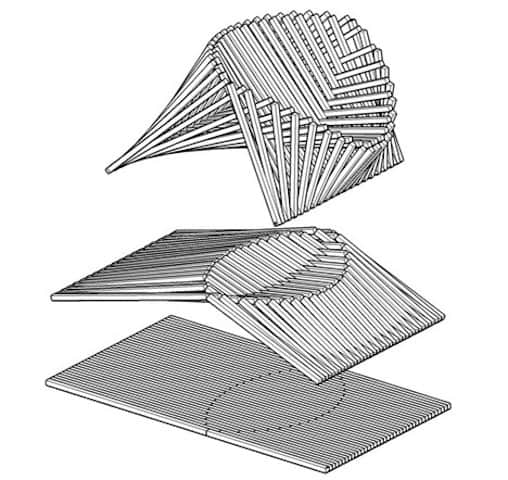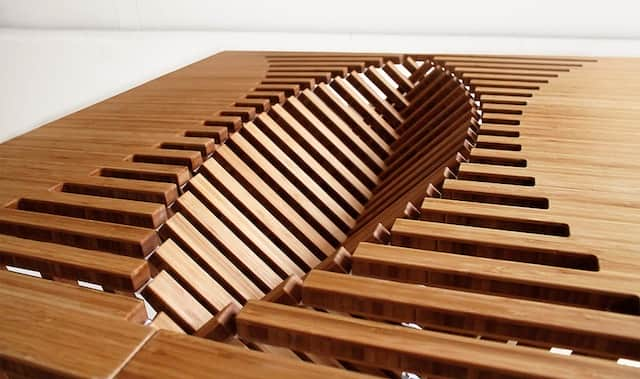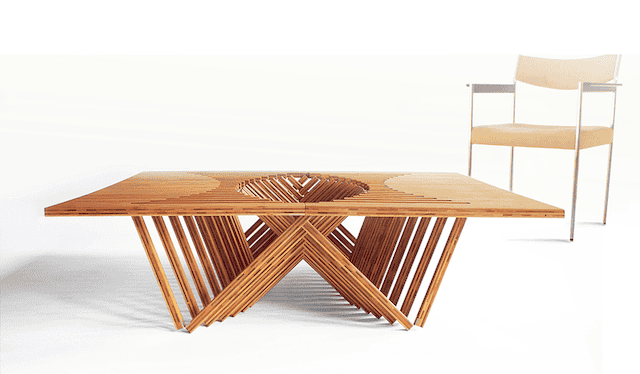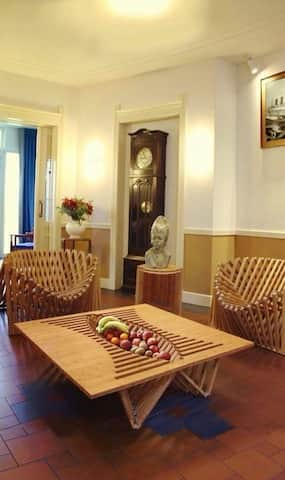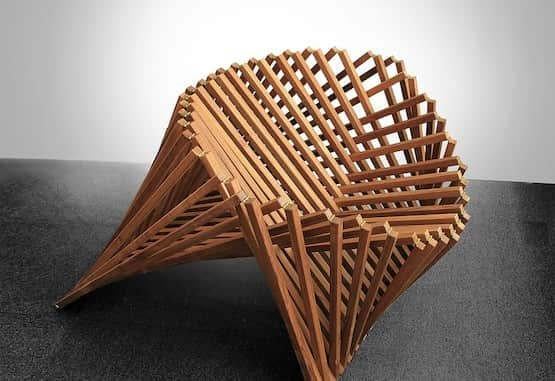
Robert van Embricqs is fascinated by the aesthetically pleasing, yet intricate complexity of the natural form. Finding inspiration for his designs in bone structure, plant life and movement, one question remained ever present: ‘to what degree is the object you’re creating capable of dictating its own design?’ This led him to develop a minimalistic design approach that can best be described as collaboration between designer and his material.
An important aspect of his design process is Van Embricqs’ conscious focus on marrying functionality with an aesthetically pleasing look. A conscious choice for functionality in design doesn’t necessarily mean one has to be burdened by conformity, let alone predictability.
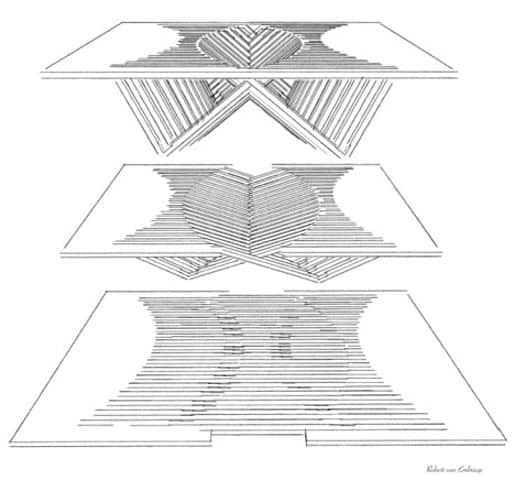 Aside continuing his furniture line, Robert van Embricqs establishes flexible concepts on bigger scale in which movement creates interaction between the users and the architecture. He focused his attention on finding new ways to adapt the techniques he developed for outdoor and interior solutions.
Aside continuing his furniture line, Robert van Embricqs establishes flexible concepts on bigger scale in which movement creates interaction between the users and the architecture. He focused his attention on finding new ways to adapt the techniques he developed for outdoor and interior solutions.
One of his most famous works is The Rising Chair which emphasises the natural shape an object can made by transforming itself. Every piece of the chair has his own task to succeed in this transformation. It’s very easy to gather a huge collection of different chairs, throughout the years there has been a staggering abundance of them, in all shapes and sizes. “But what fascinated me during my research was a simple question: to what degree is the object you’re creating capable of dictating its own design? Is it even possible for an object to ‘tell’ for which form its best suited? And if so, what will the end result be?” says Robert van Embricqs.
The Rising Chair was the first of the series. Van Embricqs explains how he went from sheet to seat: “The foundation of any chair is the flat surface you’ll eventually sit down on. Using this notion as a starting point, I made several cuts in the flat surface and pulled up the different beam-like strands of cut surface. This created the preliminary but already distinct features of any chair: back, seat and legs. The rhythm of the wooden beams gives the chair an organic shape. The cuts are most visible when the chair is still down. But at that stage of the construction, I still didn’t know what shape the chair would take in the end. This was determined by the various arches of the wooden beams the chair is made of. Folding the chair into its definitive form, as a creator, I felt a special connection to the material I was working with.”
The Rising Table came afterwards, and with this piece, van Embricqs faced the challenge of trickily incorporating a flat, supportive surface into the design. “I felt it was of paramount importance that the source materials both dictated and guided the ultimate design, while ensuring practical appliance and usability,” he explains.
The Rising Table is part of the Rising furniture formula. This means that once again, the origins of this design can be traced back to the rather simple idea of starting with a flat surface that is capable of transforming into a piece of stylishly designed furniture. “In designing the Rising Table, I felt it was of paramount importance that the source materials both dictated and guided the ultimate design, while ensuring practical appliance and usability“ says the designer.
A conscious choice for functionality in design, doesn’t necessarily mean one has to be burdened by conformity, let alone predictability. The Rising Table ignores the cliched notion that a table is little more than a flat surface that is held up by four separate legs. The result is a surprising mixture of fluid design that blends the multifaceted tabletop with the latticework of bamboo beams that function as the center of the construction. From there, the table sprouts four bamboo beams that hold up the entire construction.
Not only does this design approach rid itself of every single predictable feature when one imagines a table, it also emphasizes that the Rising Table is indeed made from a single piece of wood. This proves the Rising Table isn’t merely an eye catcher when it comes to design, it can also hold its own as a functional piece of furniture, albeit with a twist.
Videos of his works:

